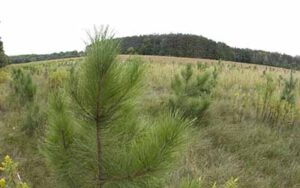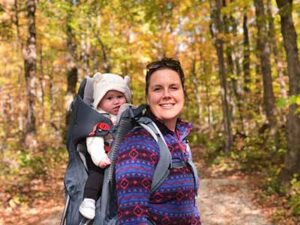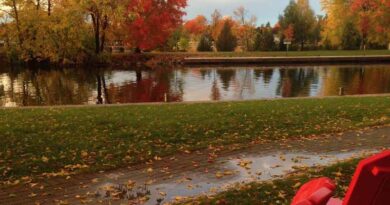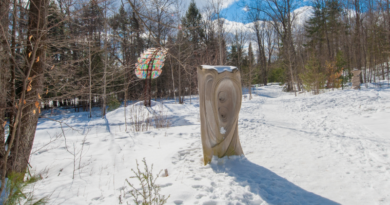Forests for Future Generations
“If we lose the forests, we lose our only teachers.” 
— Bill Mollison
Forests are critical not only for our ecosystem, but our own personal health. They help sequester carbon from the atmosphere, which is becoming more and more important as our climate changes. Healthy forests provide habitat for wildlife and improve biodiversity while also helping to clean the air we breathe and water we drink.
Forests help to stabilize soil, reduce erosion and help combat flood risks. On the human health side of things, forests provide a multitude of benefits when it comes to improving our mental and physical health. Research shows that getting out in nature and into a forest can improve your mood, decrease your heart rate and instances of heart disease, and improve cardiovascular health.
 Forests Ontario is a non-profit charity that focuses on creating and restoring forested landscapes and helping to ensure those newly planted trees are healthy and thriving in communities across the province and nationally. The charity also offers several educational programs designed to bring the outdoors into the classroom for all ages and grade levels.
Forests Ontario is a non-profit charity that focuses on creating and restoring forested landscapes and helping to ensure those newly planted trees are healthy and thriving in communities across the province and nationally. The charity also offers several educational programs designed to bring the outdoors into the classroom for all ages and grade levels.
Engaging with those that feel connected to our forests and want to ensure that they thrive into the future is the passion of Forests Ontario. “We want the next generation to be engaged and excited about our forests,” says Jess Kaknevicius, CEO of Forests Ontario, “they play a significant role in our day-to-day lives.”
If you are a property owner and you are wondering ‘How can I get involved?’ Forests Ontario encourages you to first think about what you would like for your property. Perhaps you want to increase forest cover or improve the health of your existing forest – the organization offers a host of different programs and resources that can help you connect with your forest and increase its health. Get to know your forest intimately, walk around, look at species, look at signs of health, take note of the diversity of tree species, noises and smells. When we think about healthy forests, we really need to consider diversity of species – both animal and plant – as well as look for signs of unhealthy forests like invasive species and dying trees.
When Forests Ontario works with landowners on tree planting projects, one of the first things they try to understand is, ‘Why do you have this property, and what do you want it to do?’ For example, some folks are looking to support wildlife and biodiversity, while others are looking to harvest firewood – these goals will affect the approach to creating a forest that thrives for you and your community.
Much of our land in southern Ontario is privately owned, meaning your woodlot is essential for connectivity, for animals’ migration, for improving biodiversity, and for helping to introduce different seed sources for climate resilience.
So, you ask, ‘How can I help if I don’t own a forest?’ Kaknevicius suggests getting involved in local volunteer efforts or engaging with your local conservation groups, these resources are a great way to get to know more about ecosystems in your area. Another great way is to financially support organizations doing work to protect and enhance our local forests and landscapes.
 With the generosity of donations, Forests Ontario is able to do the work they are passionate about. Donations are accepted through their website: www.ForestsOntario.ca
With the generosity of donations, Forests Ontario is able to do the work they are passionate about. Donations are accepted through their website: www.ForestsOntario.ca
Through their ambitious tree planting initiatives, extensive education programs and decades of community outreach, Forests Ontario takes great pride in millions of trees being planted each year that will grow and thrive for generations to come.




